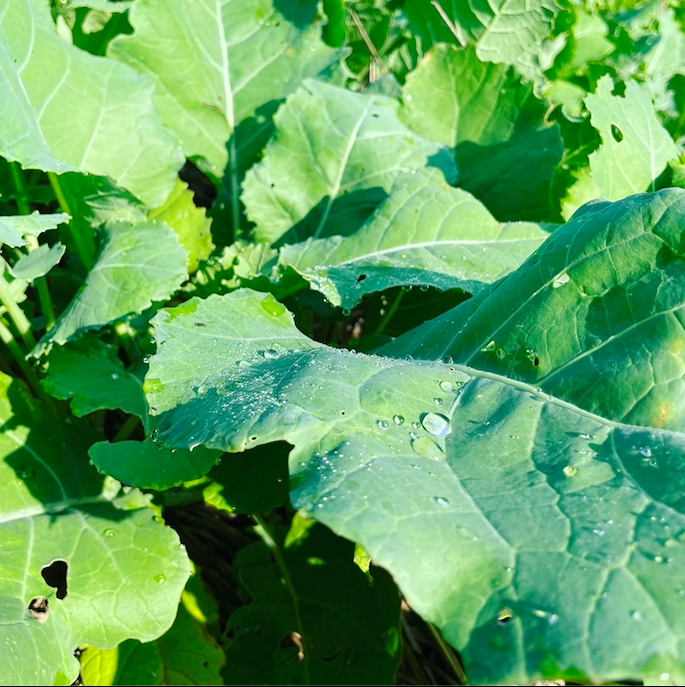
As we move into September and celebrate Labor Day weekend, we often get asked about planting brassicas this time of the year. “How late can I plant?” and “What are the best ones for grazing?” are the two most often asked questions.
Here are our answers to these questions with these brassicas listed in order of least cold hardy to most cold hardy.
MUSTARDS
The mustard family is the fastest-growing, but least cold-hardy of all the brassicas which make them excellent for fall weed control. Mustards tend to winter kill with several evenings dipping into the mid 20’s and total kill in the low 20’s. They are excellent beneficial pollinator support with their relatively quick blooms (30-40 days after planting on White Gold, 45-55 on Kodiak Brown, and 55-65 on Florida Broadleaf). High levels of glucosinolates make mustards effective at suppressing weeds and nematodes, but detract from the palatability and forage value to livestock.
RADISH
One of the most iconic cover crops, the daikon radish is very popular for its rapid growth, huge taproot, and ability to sequester and store both nitrogen and sulfur. The vast majority of radishes will be planted in August and September and ideally, they can get going 2-3 weeks prior to your first frost. Consecutive nights dropping into the 16-18 degree range will generally terminate them. While good for grazing, they will become sweeter and more palatable later in the fall as the cold nights change starches into sugars.
AFRICAN CABBAGE
The tallest growing brassica, this species is similar to radish with sustained temperatures below 20 degrees will knock it out. Cabbage is high in protein but also higher in glucosinolates so palatability is limited. African cabbage will stand better and retain more leaves through the winter than any other brassica which makes it an excellent snow-catch cover crop.
TURNIPS
Purple top turnips have been used for hundreds of years as a very reliable forage crop. Planted mid-summer through early fall, turnips can accumulate large amounts of biomass and store lots of energy in the bulb. Cattle will typically graze the leaves off in the first pass and then come back through the winter to eat the turnip bulbs. Generally, it will take multiple nights of temperatures in the lower teens to terminate a turnip.
COLLARDS
The Impact forage collard is a hybrid brassica that not only has excellent heat tolerance but also great cold tolerance. The sustained temperature in the mid-single digits will be needed to knock these out. Collards are also the highest protein brassica we have tested which makes them one of the most popular choices for grazing and forage. We will plant collards here in Nebraska up to the time of the first frost, but the earlier you can get them planted, the more growth you will get!
RAPESEED
Our trophy rapeseed is non-GMO winter canola that can survive very cold weather – even an occasional night to zero. We almost always see some rapeseed plants sneak through Nebraska winters and in mild winters we see a lot of it survive. A great seed-producing crop, rapeseed is the least expensive brassica so it is a great choice to add diversity to a mix all the way through your first frost period. A bit higher in fiber and lower in protein, rapeseed is not quite as good of a forage plant as collards, but it will be grazed by animals quite readily.
KALE
Kale and kale hybrids are very cold-hardy and will have the best chance of surviving your winters. Although not always consistent, kale has shown to survive temps as low as 10 below zero. Compared to rapeseed, it is better forage but more expensive and slower growing. We have both Siberian Kale and the Bayou hybrid which is a cross between rapeseed and kale.
The above-listed termination temperatures are just estimates and there are many factors that play into plant termination. As the cold weather from this past year taught us, snow is an excellent insulator and we say turnips survive several nights of 30 below zero temps because they had a foot of snow covering them. As with any management decision, we encourage you to try new things on small strips to observe and learn and build your knowledge and experience base for better decisions in future years.
As always, feel free to contact us with more questions. We do have an excellent supply and availability of brassica seed, so let us know how we can help!
